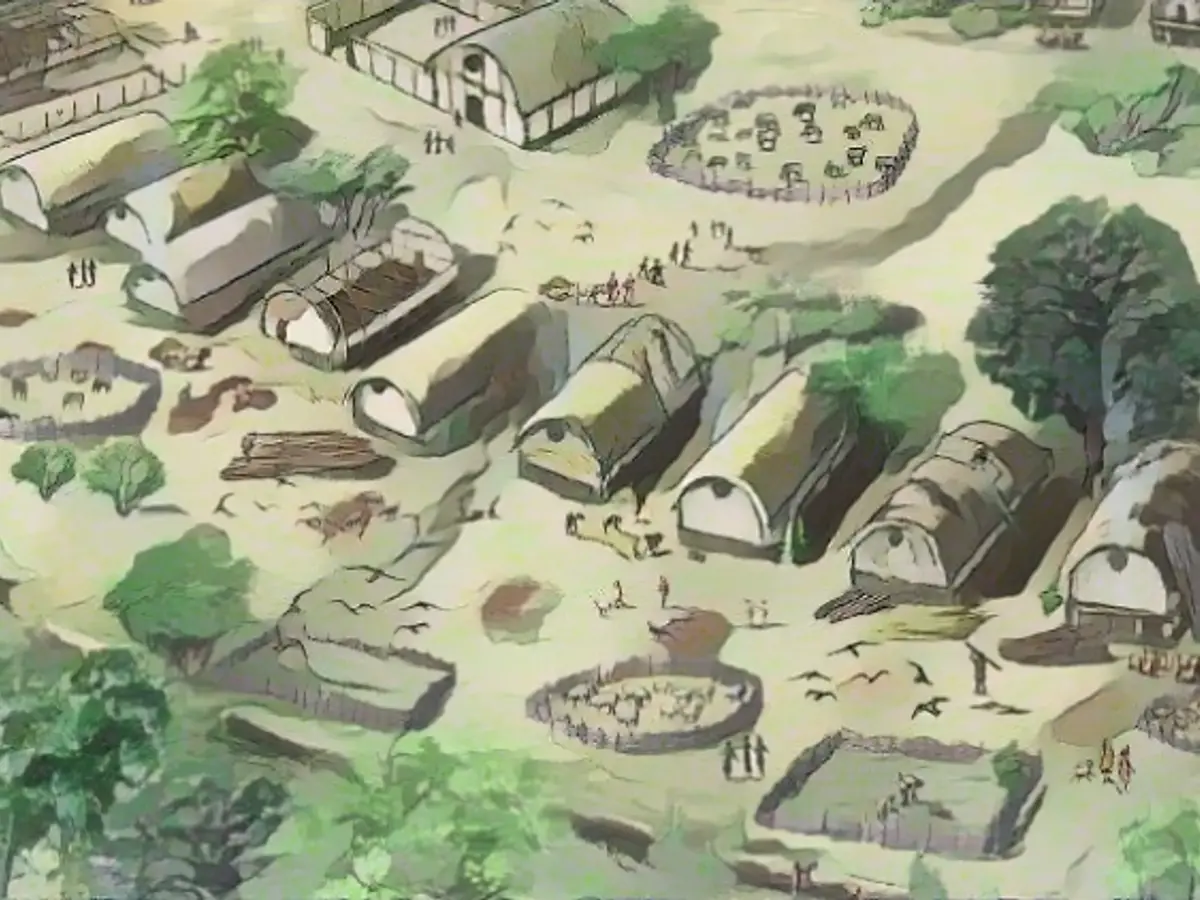How supplies succeeded in old mega-settlements
Settlements in which up to 15,000 people lived together emerged as early as 6000 years ago. Researchers now want to know how the people in the so-called mega-settlements were supplied with food and have discovered an ingenious system - and peas.
More than 6000 years ago - around 1500 years before the construction of the ancient Egyptian pyramid of Cheops - the oldest cities in Europe and the largest cities in the world at the time were built north of the Black Sea. These mega-settlements of the Trypillian culture on the territory of present-day Ukraine and Moldavia were up to 320 hectares, or 3.2 square kilometers, in size and provided living space for up to 15,000 people. The population fed themselves through a sophisticated system of growing peas in particular, but also grain and keeping livestock.
"The provisioning of the inhabitants of the mega-settlements was based on an extremely sophisticated food and grazing management system," says lead author and palaeoecologist Frank Schlütz from Kiel University. According to this, a large proportion of the cattle and sheep were kept on fenced pastures. "The manure produced by the animals was used by humans to fertilize the peas in particular."
Diverse use of pea plants
According to this, peas and cereals were the mainstays of the diet at the time, while meat only contributed around ten percent. The pea straw produced during crop cultivation was presumably used to feed the herds on the pastures. According to Schlütz's team in the "Proceedings" of the US National Academy of Sciences ("PNAS"), this closely interlinked economic system ensured a healthy diet for the people of the mega-settlements.
The Trypillia communities - known as Tripolje in Russian - emerged around 6800 years ago in the extremely fertile forest steppe between the Danube tributary Pruth on the Romanian-Moldavian border and the Dnipro (Dnieper). The size of the settlements reached their maximum more than 6000 years ago. The large settlements probably disintegrated again after a few centuries due to social tensions and by 5000 years ago the Trypillian societies had disappeared completely. The largest cities by far were located in the eastern settlement area, south of present-day Kiev.
Buildings were erected in a ring
The buildings of these settlements were laid out in a ring around a central square and, in addition to residential buildings, contained huge assembly halls, which were among the largest buildings in Europe at the time, as well as smaller assembly buildings in the individual districts. Based on the architecture, the team assumes a society that was still quite egalitarian in structure during the heyday of the mega-settlements.
In order to understand the economic practices of the time, the team analyzed nitrogen and carbon isotopes in soils, plant remains and animal and human bones from settlements of various sizes - including the approximately 200-hectare city of Maidanetske, which is considered the most populous city of the time with up to 15,000 inhabitants.
As the study showed, peas provided 54 percent and cereals 28 percent of the protein - a total of around 82 percent - and together around 92 percent of the calories. Animal products provided less than 10 percent of the calorie requirement. However, they served as a source of important nutrients such as vitamin B12 and were probably eaten at communal celebrations.
Livestock farming mainly for the production of manure
"The main focus of intensive livestock farming was the removal of dung to enable the harvesting of protein-rich legumes on the already fertile and additionally fertilized soils," the group writes. "In the mega-settlements, most cattle were probably fenced in to concentrate the dung in a small area for easier collection and to protect the adjacent crop beds from the animals." Such a sophisticated and extensive farming system probably did not exist anywhere else in the world at that time.
However, the analysis of the cities also shows that the planned economy did not last very long. The disappearance of smaller meeting houses and an increasing proportion of residential buildings of different sizes point to increasing social inequality. "As we know from previous studies, social tensions arose as a result of increasing social inequality," says co-author Robert Hofmann. "People turned their backs on large housing estates and opted to live in smaller settlements again."
Read also:
- This will change in December
- Attacks on ships in the Red Sea: shipping companies avoid important trade route
- Houthi rebels want to launch further attacks despite international coalition
- USA forms military coalition against Houthi attacks on ships in the Red Sea
The advanced education in agriculture and paleontology during that era played a significant role in understanding the farming practices of the Trypillian culture. The cultivation of peas and cereals, alongside livestock farming, was covered in historical texts and classroom lessons, providing a comprehensive understanding of their daily life and nutritional needs.
Moreover, the historical importance of these findings in the field of paleoecology has significantly contributed to the advancement of nutrition science, offering insights into ancient agricultural practices and their impact on human health.
Source: www.ntv.de







